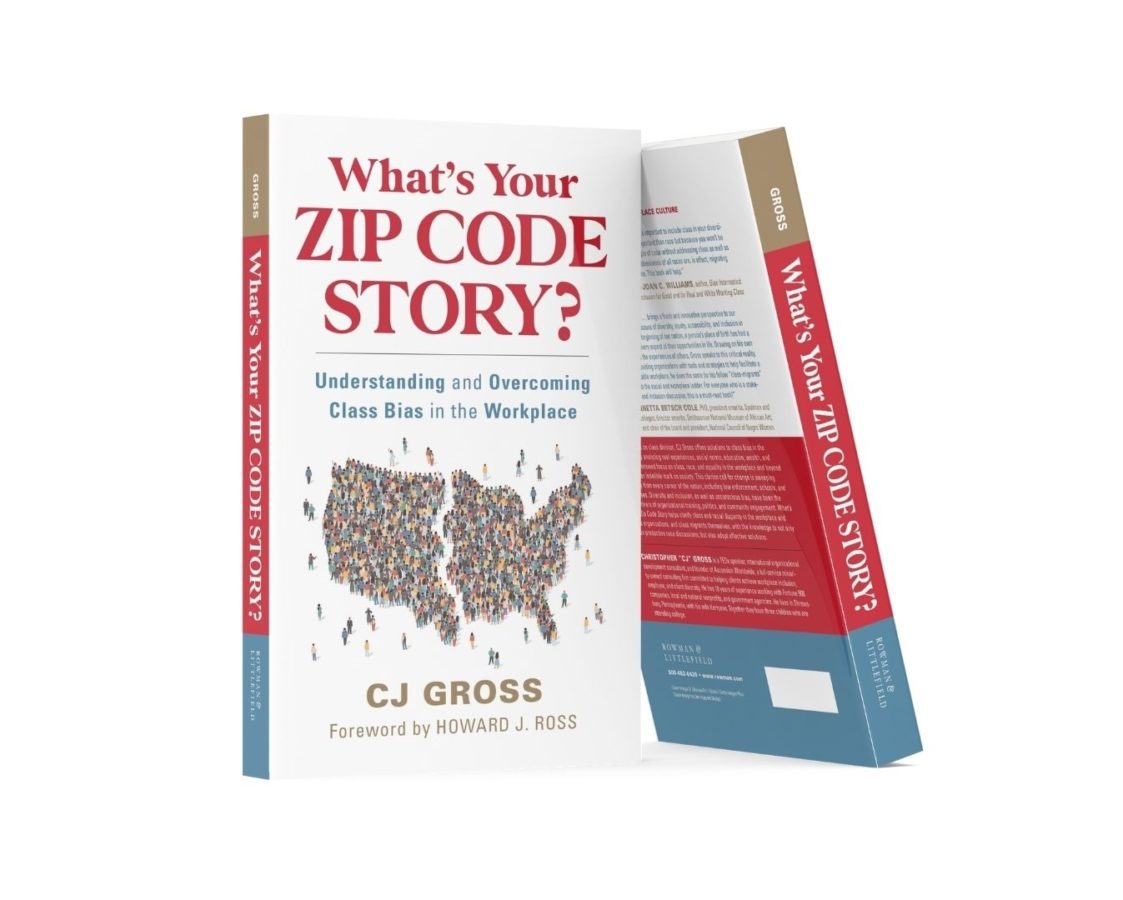When looking to overcome workplace bias and increase diversity, equity and inclusion, taking a look at current employees, hiring methods and workplace culture are all important. But for CJ Gross, author of the book “What’s Your Zip Code Story?: Understanding and Overcoming Class Bias in the Workplace,” it’s equally crucial to look at your own background and how that shows up in the workplace.
“The zip code story is about not just where you grew up. It’s about how you grew up, it’s about the sights and sounds outside of your door,” Gross told Technical.ly. “It’s about the conversations around the dinner table — if you even had dinner at the dinner table. It’s about the things that make you who you are.”
He unpacks the impact our backgrounds have throughout the new book, which debuts on May 20. The book, Gross said, is broken down into three different areas: lived experience, how the brain unintentionally classifies people, places and things and how one can expand their background experiences to be more inclusive. That all centers around the idea of class and how we relate to the people around us based on our own life up until that point.
Gross didn’t start as a DEI expert, though. His background is in engineering, with previous experiences as a TEDx speaker, and he eventually founded Silver Spring, Maryland-based Ascension Worldwide, which offers inclusivity training and consulting. With that experience, he defines class largely based on three components: education, income and overall wealth such as assets or money in the bank.

CJ Gross. (Courtesy photo)
With this in mind, he said, when we meet someone new, brains automatically categorize people on several identity markers: gender, race, the clothes they’re wearing and how they speak. The brain automatically connects that information based on your own experience and builds “based on an algorithm that’s already built,” he said. This is how he thinks people search for connections with new people, but the issue is that those assumed connections don’t always ring true.
“What I really want people to understand is: We are constantly classifying people, places and things,” Gross said. “And in order to expand that conversation in our brain, we have got to expose ourselves to different experiences.”
Too many of the same, homogenous types of people in the workplace means that products might be missing a crucial component or not thought through for every consumer. Adding employees from all sorts of backgrounds can thus create better services, Gross said.
To achieve this, he recommends a few different strategies. One is to cultivate good relationships through programs like mentorship. The second is to develop cultural and character-building initiatives and activities to connect employees and establish bonds. The third requires valuing informal credentials or expertise from employees outside work knowledge and certification that can be an asset to the workplace.
But overall, he said it’s most important to be intentional about how employees connect and unpack internal bias — especially when it comes to class.
“It is those pieces that are baked in the systems of how we do our jobs that create exclusionary behavior, and it’s not on purpose for most people,” Gross said. “It’s not intentional, it’s not like people are twisting their whiskers and thinking, ‘Yeah, I’m just going to get those millennials today.’ That’s not how it happens. It happens when we’re not being intentional and just doing the same thing over and over for years.”
Before you go...
Please consider supporting Technical.ly to keep our independent journalism strong. Unlike most business-focused media outlets, we don’t have a paywall. Instead, we count on your personal and organizational support.
3 ways to support our work:- Contribute to the Journalism Fund. Charitable giving ensures our information remains free and accessible for residents to discover workforce programs and entrepreneurship pathways. This includes philanthropic grants and individual tax-deductible donations from readers like you.
- Use our Preferred Partners. Our directory of vetted providers offers high-quality recommendations for services our readers need, and each referral supports our journalism.
- Use our services. If you need entrepreneurs and tech leaders to buy your services, are seeking technologists to hire or want more professionals to know about your ecosystem, Technical.ly has the biggest and most engaged audience in the mid-Atlantic. We help companies tell their stories and answer big questions to meet and serve our community.
Join our growing Slack community
Join 5,000 tech professionals and entrepreneurs in our community Slack today!

The man charged in the UnitedHealthcare CEO shooting had a ton of tech connections

Northern Virginia defense contractor acquires aerospace startup in $4B deal

From rejection to innovation: How I built a tool to beat AI hiring algorithms at their own game



